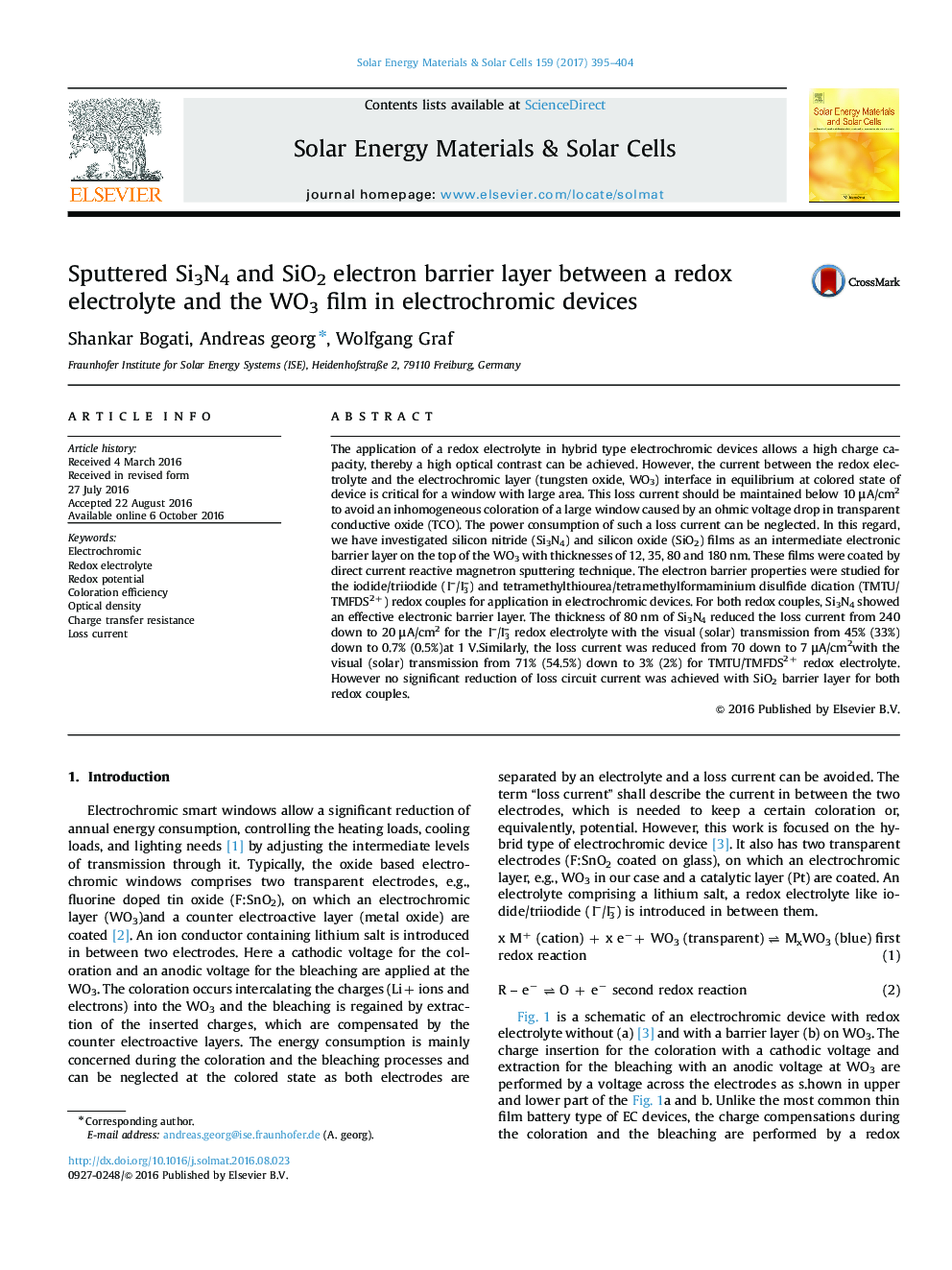| کد مقاله | کد نشریه | سال انتشار | مقاله انگلیسی | نسخه تمام متن |
|---|---|---|---|---|
| 6457531 | 1420664 | 2017 | 10 صفحه PDF | دانلود رایگان |

- Sputtered Si3N4 and SiO2 are investigated as electron barrier layer for Iâ/Iâ3 and TMTU/TMFDS2+ in electrochromic devices.
- Loss currents and optical densities are compared for Iâ/Iâ3 and TMTU/TMFDS2+ redox systems.
- A significant decrease in loss current is achieved with Si3N4 for both redox electrolytes.
The application of a redox electrolyte in hybrid type electrochromic devices allows a high charge capacity, thereby a high optical contrast can be achieved. However, the current between the redox electrolyte and the electrochromic layer (tungsten oxide, WO3) interface in equilibrium at colored state of device is critical for a window with large area. This loss current should be maintained below 10 μA/cm2 to avoid an inhomogeneous coloration of a large window caused by an ohmic voltage drop in transparent conductive oxide (TCO). The power consumption of such a loss current can be neglected. In this regard, we have investigated silicon nitride (Si3N4) and silicon oxide (SiO2) films as an intermediate electronic barrier layer on the top of the WO3 with thicknesses of 12, 35, 80 and 180 nm. These films were coated by direct current reactive magnetron sputtering technique. The electron barrier properties were studied for the iodide/triiodide (Iâ/I3â) and tetramethylthiourea/tetramethylformaminium disulfide dication (TMTU/TMFDS2+) redox couples for application in electrochromic devices. For both redox couples, Si3N4 showed an effective electronic barrier layer. The thickness of 80 nm of Si3N4 reduced the loss current from 240 down to 20 μA/cm2 for the Iâ/I3â redox electrolyte with the visual (solar) transmission from 45% (33%)down to 0.7% (0.5%)at 1 V.Similarly, the loss current was reduced from 70 down to 7 μA/cm2with the visual (solar) transmission from 71% (54.5%) down to 3% (2%) for TMTU/TMFDS2+ redox electrolyte. However no significant reduction of loss circuit current was achieved with SiO2 barrier layer for both redox couples.
Journal: Solar Energy Materials and Solar Cells - Volume 159, January 2017, Pages 395-404